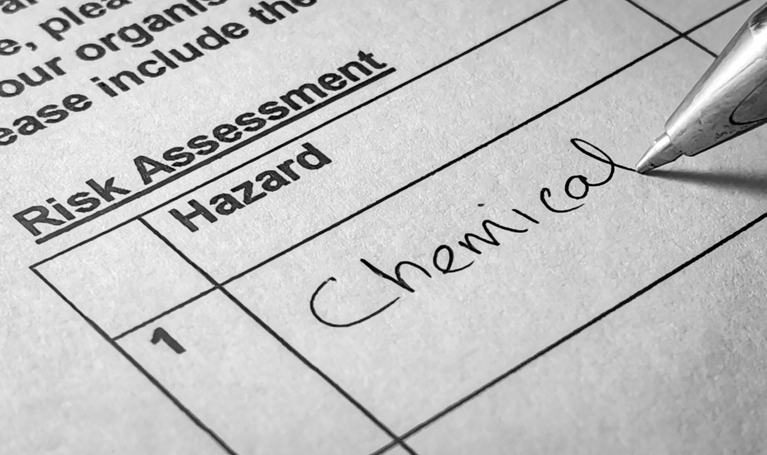According to accident prevention organisation ROSPA, there are 1.7 million work-related health issues in the UK, costing businesses £15 billion each year.
To prevent workplace accidents and ill health, businesses are required by law to carry out risk assessments of their premises and operations.
What is a risk assessment?
A risk assessment is a critical duty your business should perform on a regular basis. It is a document that requires the assessor to list hazards to health and safety in company premises and as a result of company operations.
The assessment will outline hazards, who may be at risk of harm, what existing control measures are in place and recommendations to reduce that risk. They should cover all aspects of the working environment.
Are risk assessments a legal requirement for all businesses?
Risk assessments are required by law for any workplace, employer or self-employed person. They should cover risks posed to employees and those outside of the workplace such as visitors, contractors and suppliers.
If there are five or more employees, the assessment must also be documented.
Risk assessments are also required for team members who work from home. Though you don’t have to go into their home, essentials should be accounted for. Think supportive and comfortable furniture, a laptop or computer monitor at eye level and a sufficiently ventilated room.
When should I do a risk assessment?
First off, you should do a risk assessment when you’re starting out activities or processes that haven’t been risk assessed. Documenting the risks, along with the risk-reducing measures in place, will keep you on the right side of the law.
You should also do an assessment when there are changes to activities. This could be carrying out an existing process in a new way, moving to a new workplace or working with different substances. Finally, if new staff are introduced – especially if they have particular needs such as a long-term health condition – then it’s wise to do another risk assessment.
Now you’ve got your baseline. It’s up to you review it regularly and then update it if necessary. Reviewing your assessment annually is a good benchmark.
Download your free risk assessment template for small businesses here [.doc format].
How to carry out a risk assessment
Every business must appoint someone to carry out health and safety duties – whether that’s yourself, an employee or someone from outside the business.
A risk assessment can be carried out by anyone who has ‘enough knowledge, experience and understanding of health and safety matters’. Look to the most competent member of staff (which could be you as the employer), before getting outside support.
To be effective, as many employees as possible should be consulted to find out what potential risks face them at work. You should also observe the premises and the day-to-day routines and operations of your employees. It should be clearly outlined who is responsible for ensuring each risk is minimised.
What should be included in a risk assessment?
As you can see from the risk assessment template provided above, the crucial to points to consider are:
#1 – List of hazards
When listing hazards, think about the activities, processes and substances that could cause harm. Working with harsh chemicals is somewhat obvious, but working on your own can present a hazard too. For example, if a cleaner is working alone in a residential property and gets injured when nobody else is home.
“The health and safety manager, or team leader whose responsibilities also cover health and safety, should list all potential hazards across various categories including physical safety (slippery floors), cybersecurity (data breaches), finances (fraud), and operations (equipment failure),” Mike Baron, commercial director at BWS, told Small Business.
Reviewing accident and ill-health records will provide clarity and direction on risks you may overlook. Start with your most high-risk hazards and then work your way down the list.
#2 – Risk rating
By this, we mean the level of risk – though there is no standard risk rating, it’s helpful to think of risk in terms of high, medium, low and minimal. “There are two factors to consider: likelihood (how often it might occur) and impact (how badly it could affect the business),” said Baron.
#3 – Who is at risk
It’s not just a case of what the risks are – it’s who’s at risk. Having specific groups of people in mind (say, pregnant women and wheelchair users) will help you to mitigate any issues. Taking the pregnancy example: is there risk in the current work that they do? Is there anything that you as an employer can do to make them more comfortable? A chair with greater back support is a good example.
Think about external folks too, including visitors and contractors. As they’re less familiar with your workplace, risks of slips, trips and falls are greater.
#4 – Preventative/corrective action
It’s all about reasonable risk reduction, rather than eradicating any risk of, well, risk. That’s impossible. Take risks one at a time and see how much you can reduce each one.
Consider protective equipment, reducing access to high-risk places, implementing cybersecurity training for your staff, or even simpler actions like providing washing facilities. With more extreme risks, perhaps it’s time to change processes or materials to reduce the likelihood of harm.
Decide who should be responsible for the action and when the action needs to be completed by. Of course, the higher the risk rating the more urgent it should be.
As mentioned, if you’ve got five or more employees, you’ll need to record:
- The hazards
- Who might be harmed and how
- Measures in place to reduce risks
Risk assessments should be carried out periodically depending on the risks and especially after an accident or incident in order to prevent such ill health events happening in future. New equipment means new hazards – and changes in national employment policy should be keenly observed.
Keeping yourself protected
For those times when you can’t prevent accidents, having the right insurance in place is paramount.
Public liability insurance will protect you in the instance that your operations affect a member of the public or their property. It will cover you against claims that result in legal proceedings.
Employers’ liability insurance is a must if you have employees, even if they’re interns, volunteers or seasonal staff. You must be insured for a minimum of £5m from an authorised insurer. It will cover you if an employee gets injured or ill because of the work they do for you.
Professional indemnity insurance provides protection if you’re accused a fault with your work. This insurance covers the cost of compensating clients for loss or damage as a result of negligent work or advice from you.
More on running a business
A small business guide to the National Living Wage – The new National Living Wage has come into effect for 2024/25. Elaine Pritchard of Moorepay explains what you need to know
Public liability insurance: why you need it – Not sure if you need public liability insurance for your business? Here’s why you may need it and what event insurance is available
Employers’ liability insurance – what is it and do you need it? – Here, we answer all of your questions around employers’ liability insurance. How much will you pay and what happens if you don’t have it?





